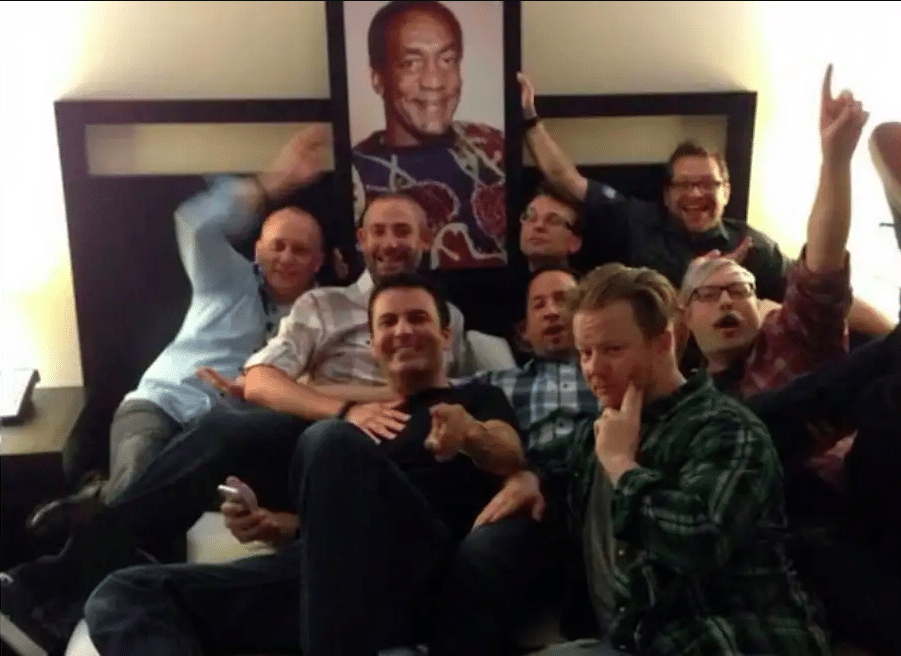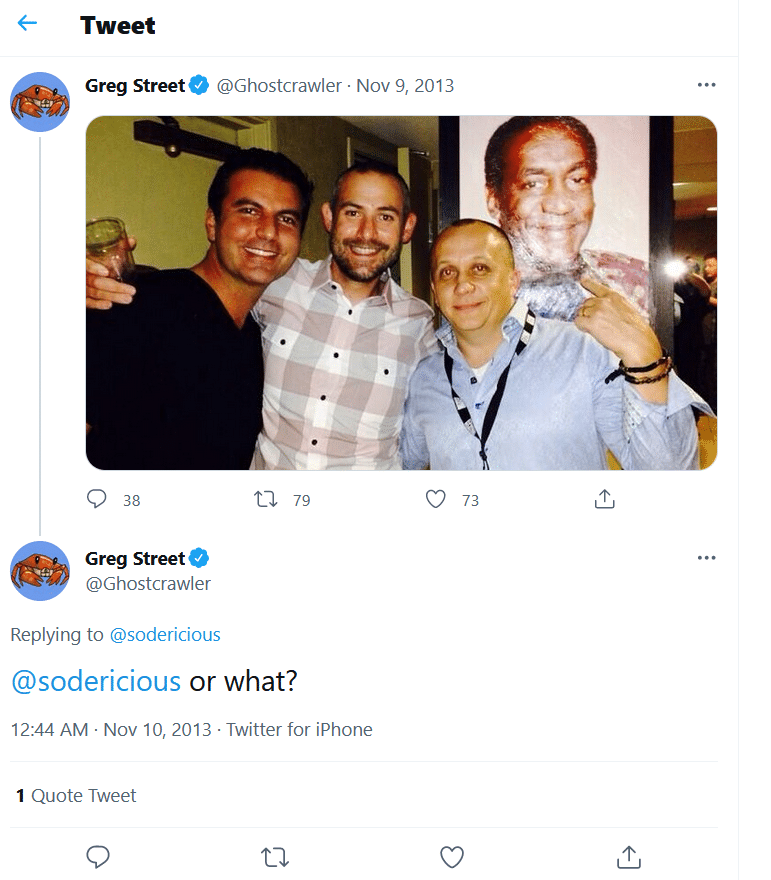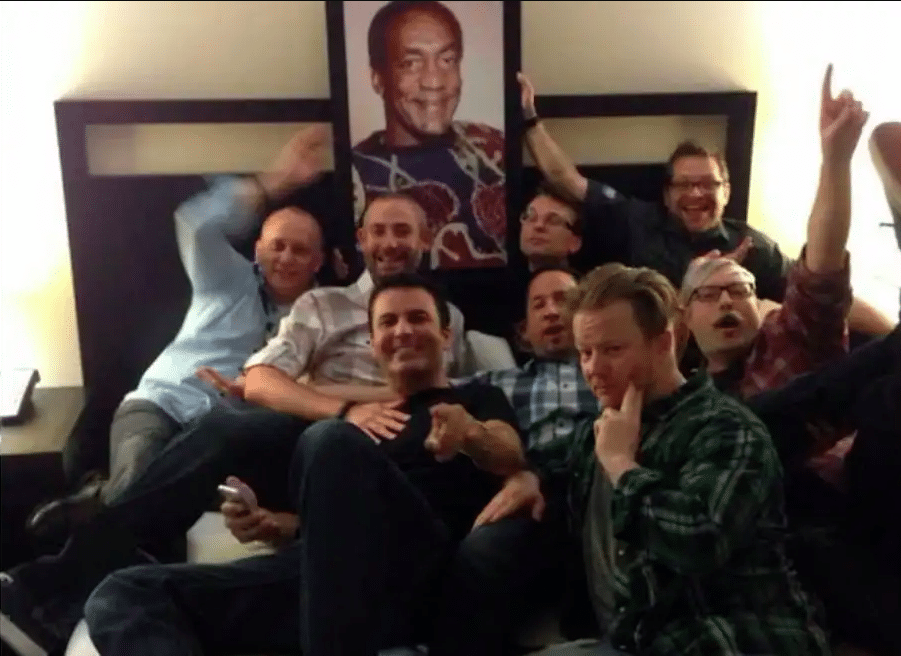TRIGGER WARNING This article or section, or pages it links to, contains information about sexual harassment and/or suicide which may be triggering to survivors.
In the last month, the games industry has made international headlines – for the worst reasons. On 20 July 2021, The State of California filed a lawsuit against the videogame company Activision Blizzard Inc. The suit alleges that women in the company face gender discrimination, unequal pay, and substantial sexual harassment, which the company has failed to act on. Furthermore, it alleges that people who spoke up about these issues faced repercussions in the workplace, while the perpetrators were shielded. It’s a landmark case that has international ramifications.
‘Female employees almost universally confirmed that working for Defendants [Activision Blizzard] was akin to working in a frat house, which invariably involved male employees drinking and subjecting female employees to sexual harassment with no repercussion.’
DFEH vs. ACTIVISION BLIZZARD
Here, we’ve broken down the contents of the lawsuit, the key players, and the major events that have transpired in the weeks since this piece of litigation was filed.
Read: Activision Blizzard lawsuits: Everything that has happened so far
WHO’S INVOLVED?
The plaintiff, in this case, is the State of California’s Department of Fair Employment and Housing (DFEH). DFEH are suing Activision Blizzard Inc, a videogame holding company headquartered in Santa Monica, California.
Activision Blizzard inc includes five different videogame businesses: Blizzard Entertainment, King Digital Entertainment, Major League Gaming, Activision Publishing, and Activision Blizzard Studios.
These five companies oversee many game development studios around the world, including Sledgehammer Games in Melbourne, who are currently developing Call of Duty: Vanguard for Activision Publishing. Collectively, they employ around 9,500 people. Between their different brands, Activision Blizzard publishes some of the most commercially successful videogame franchises in the world, including Call of Duty, World of Warcraft, Overwatch, Candy Crush Saga, and Diablo. This lawsuit specifically mentions events that occurred within Activision Publishing and Blizzard Entertainment.
To give you a sense of the kind of money that’s involved in game development at this scale, Activision Blizzard reported $8 billion in revenue in 2020. The Call of Duty franchise has reached almost half a billion premium game sales since the first game was released in 2003. On top of this, the 2020 free-to-play title Call of Duty: Warzone already has 100 million players. Candy Crush Saga, which is developed by King Digital Entertainment, was the first freemium game to surpass a billion dollars in profits. In 2016, Activision Blizzard acquired King Digital Entertainment for US$5.9 billion.
With numbers like these, it’s safe to say that Activision Blizzard games are some of the most widely known and played in the world. The company is also one of the world’s biggest employers of game developers. In terms of cultural impact, employment, and sheer financial enormity, their influence can’t be overstated.
WHAT’S IN THE LAWSUIT?
DFEH vs. Activision Blizzard is a piece of civil litigation brought by the state of California following a two-year investigation into workplace gender discrimination and harassment at the company. The complaint argues that Activision Blizzard have violated employment law in California, describing a ‘pervasive frat boy workplace culture’ in the company.
It’s important to realise how far back the grounds of this lawsuit extend. DFEH cites internal reports of discrimination and harassment at Activision Blizzard from before their investigation began that did not receive an appropriate response from management. It cites testimony from female former employees of Activision Blizzard, as well as the company’s own records, to allege that the company discriminates against women in its employ, and failed to act on harassment against women in its employ.
Before filing the lawsuit the DFEH undertook mediation with Activision Blizzard, but it failed to ‘eliminate an unlawful practice through conference, conciliation, mediation of persuasion.’ In other words, Activision Blizzard didn’t take adequate steps to fix the problems, according to DFEH. This is an important aspect of the lawsuit – not just the behaviour, but the repeated failure to remedy the behaviour.
In technical terms, the causes of action for the lawsuit are: Employment discrimination because of sex; failure to prevent discrimination and harassment; unequal pay, and retaliation.
Let’s break this down.
1. EMPLOYMENT DISCRIMINATION BECAUSE OF SEX AND 2. UNEQUAL PAY
The complaint describes a work environment where women are underpaid compared to men in the same role and promoted less frequently. Women in the company are also offered fewer stock options and bonuses. Layoffs are frequent at Activision Blizzard, with almost 190 people laid off in 2021, and 800 laid off in 2019. During layoffs, women were also more likely to lose their jobs than men, despite being only 20% of the Activision Blizzard Inc workforce.
‘Very few women ever reach top roles at the company. The women who do reach higher roles earn less salary, incentive pay and total compensation than their male peers, as evidenced in Defendants’ own records,’
DFEH vs. Activision Blizzard
The lawsuit notes that across every ActiBlizz’s company, there has never been a woman in the role of CEO or President. It describes women at every level of seniority experiencing gendered pay discrimination, ranging from lowing starting salaries for women, slower rates of promotion, and higher rates of termination. The lawsuit states that as a result, many women are ‘forced to leave the company.’
‘Very few women ever reach top roles at the company. The women who do reach higher roles earn less salary, incentive pay and total compensation than their male peers, as evidenced in Defendants’ own records,’ the lawsuit reads.
On top of pay disparity and structural discrimination, the lawsuit alleges that women at work were held to a drastically different standard to men. The suit alleges that the ‘frat boy culture’ of the company meant that men would often come into work hungover, relaxed, and pass on their own responsibilities to female employees. It states that men would banter about sexual encounters, discuss women’s bodies, and joke about rape.
By contrast, women were often micromanaged and bullied. Women of Colour were particular targets of insidious workplace bullying: one Black game developer testified that her supervisor would call her during her lunch break to check up on her. Another Black woman described her supervisor demanding a one-page summary with any leave request, which no other member of the team had to supply. This was one manifestation of a pattern of hyper criticality and micromanaging that led her to her leaving the company.
3. FAILURE TO PREVENT DISCRIMINATION AND HARASSMENT
Let’s start with this quote from the lawsuit: ‘Female employees almost universally confirmed that working for Defendants [ActiBlizz] was akin to working in a frat house, which invariably involved male employees drinking and subjecting female employees to sexual harassment with no repercussion.’
Female employees are subjected to constant sexual harassment, including having to continually fend off unwanted sexual comments and advances by their male co-workers and supervisors, and being groped at ‘cube crawls’ and other company events. High ranking executives and creators engaged in blatant sexual harassment without repercussions
DFEH vs. Activision Blizzard
This section describes some horrific sexual assault and harassment allegations that suggest long-term patterns of sexual misconduct in the company. What is particularly relevant to this lawsuit is the fact that these patterns of misbehaviour were known by executives, and no effort was made to punish the perpetrators, support victim-survivors, or work towards a safer work environment.
It’s important to remember that this is a civil case against a company. No individual (not even the alleged harassers named in this lawsuit) is currently facing litigation for sexual harassment or misconduct.
To quote the lawsuit, ‘female employees are subjected to constant sexual harassment, including having to continually fend off unwanted sexual comments and advances by their male co-workers and supervisors, and being groped at ‘cube crawls’ (NB: a ‘cube crawl’ is a practice where men in the company would get drunk and walk through the office cubicles, propositioning women at their desks) and other company events. High ranking executives and creators engaged in blatant sexual harassment without repercussions.’
One particularly tragic example is that a woman employed by Activision Publishing died by suicide while on a company trip with a male supervisor ‘due to a sexual relationship’ she had with him. The complaint describes her as experiencing extensive workplace sexual harassment in the lead up to her death, including photos of her vagina being passed around at a company holiday party.
The complaint describes a total failure of leadership to provide a safe working environment, or to respond to reports of harassment. Another key example is Blizzard Entertainment Senior Creative Director of World of Warcraft, Alex Afrasiabi, who has since left the company. He is described as a serial harasser who nicknamed his hotel suite at BlizzCon, a company event, ‘the Cosby suite,’ after alleged rapist Bill Cosby.
After the lawsuit hit the media, photos began to circulate of male Blizzard Entertainment employees in the Cosby Suite, in front of a framed portrait of Bill Cosby.
There are social media posts mentioning the Cosby suite going back years; here’s one from former Blizzard Entertainment Lead Designer Greg Street in 2013 proclaiming: ‘There must always be a Cosby suite’.
The lawsuit alleges that, after multiple reports of sexual misconduct over a period of time, Afrasiabi received a verbal warning about his alcohol use from Blizzard Entertainment President J Allen Brack, and no further measures were taken. Consequently, Afrasiabi continued this behaviour until he left the company in 2020. In sum: the allegation is that there was no accountability or recourse for predatory behaviour, because it was occurring at the highest level, and offenders were shielded by other men in the company.
RETALIATION
The lawsuit paints a clear picture of the difficulties of reporting misconduct in this context. The alleged misconduct occurred at every level of the company, there was a pervasive ‘frat boy culture,’ and some alleged perpetrators were senior executives. The HR department was perceived as allied with the alleged perpetrators, which made reporting even harder.
To make matters worse, the lawsuit describes that ‘employee’s complaints were treated in a perfunctory and dismissive manner and not kept confidential.’ This meant that employees who made complaints were often punished for doing so – this is called retaliation, and it’s illegal.
Where alleged offenders like Afrasiabi received verbal warnings or personal leave, whistleblowers were treated very differently. The lawsuit describes the way that those who spoke out about workplace misconduct were laid off, transferred unwillingly to other projects, or denied work.
WHAT NOW?
Unsurprisingly, Activision Blizzard immediately released a statement decrying the lawsuit as ‘distorted, and in many cases false.’ Despite these remonstrations, the impact has been immense. Game developers and players alike have protested the company’s actions, and several high profile Blizzard executives have resigned, including Blizzard Entertainment president J Allen Brack, who allegedly failed to appropriately respond to reports of sexual misconduct by Alex Afrasiabi, has resigned from the company. Blizzard Entertainment has also pushed back several scheduled releases and updates to flagship titles Overwatch and Hearthstone.
Most importantly, investors in Activision Blizzard filed a class action against the company in August, claiming that the harassment allegations have been economically damaging. The investor suit argues that Activision Blizzard CEO Bobby Kotick, current CFO Dennis Durkin, and former CFO Spencer Neumann failed to disclose to shareholders that the company was being investigated by the DFEH, which artificially inflated share prices. The combination of these cases could financially gut even a titan like Activision Blizzard.
IS THIS JUST WHAT THE GAMES INDUSTRY IS LIKE?
While games are made at many different scales, from non-commercial, artistic endeavours to megacorporations, it’s undeniable that the commercial games industry is dominated by men. Allegations of sexism and harassment in larger companies are sadly common. In the past few years, there have been a few legal actions against major game development companies.
Last year, Ubisoft (who develop the Assassin’s Creed and Far Cry series) came into the spotlight for misogynistic bullying, sexual harassment and predatory behaviour towards women. These allegations led to the resignations of Chief Creative Officer Serge Hascoet, Human Resources Director Cécile Corne, and managing director of the Canadian branch, Yannis Mallat. In 2019 Riot Games who develop League of Legends settled a gender discrimination lawsuit brought by five former employees for US$10 million.
The Activision Blizzard lawsuit is significant on its face, but the investor response is also a real indicator that the games industry is becoming more accountable. While these circumstances are horrific, the existence of these lawsuits is a sign that the culture in games might be changing, slowly.







